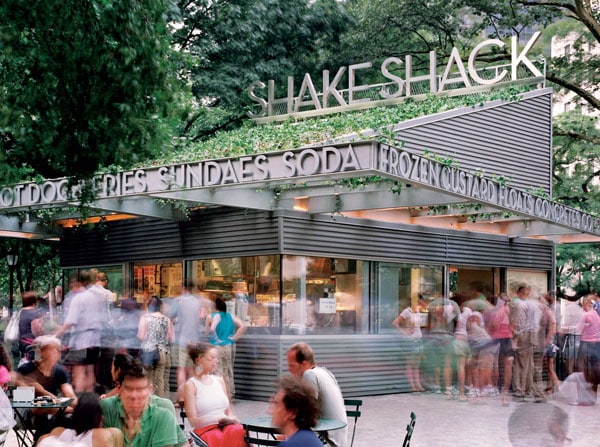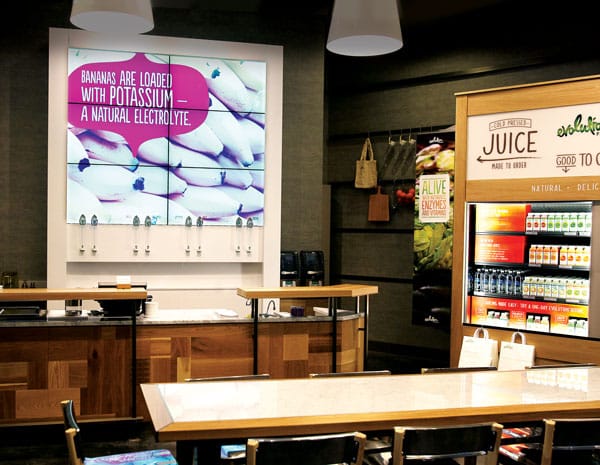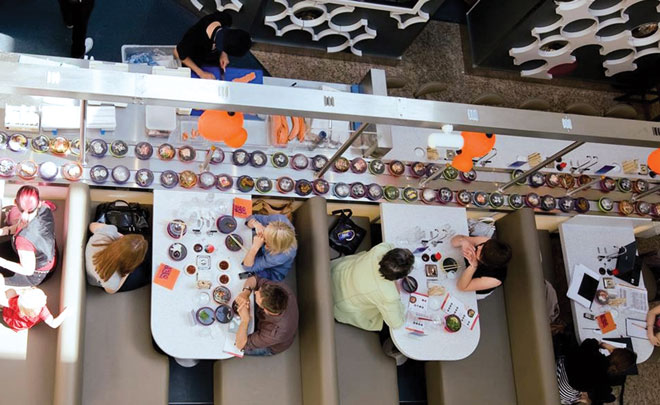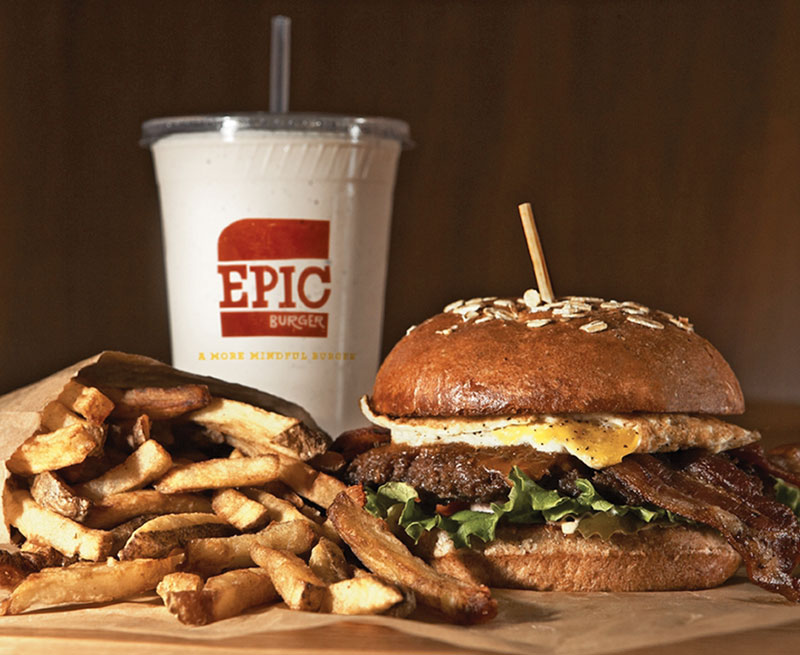In the highly competitive restaurant industry, where innovation reigns, a lot can happen in the span of half a decade. Five years ago, the quick-serve industry was a different place. Five Guys was mostly a regional player and the better-burger category had yet to explode. Chipotle started making headlines with its commitment to sustainable food. And operators were raving about hot trends like eco-friendly packaging and the renewed focus on coffee.
Now, of course, all of that is old news. Five Guys leapt into national prominence and ushered in the “better burger” category. Chipotle became a major leader in the locally grown food movement, inspiring others to take a closer look at their menus. Once-trendy ideas like greener packaging and gourmet coffee are now a given at many companies. In a similar vein, restaurants in their infancy today could be the heavyweights of tomorrow, spurred to growth by a new generation of customers.
Weaned on social media, scarred by the recession, and increasingly interested in global flavors, today’s consumers are seeking out a different kind of restaurant.
In the next half-decade, these five segments stand to gain the most.
The Eco-Burger
Anthropologists believe all of Western civilization was built on wheat and beef, and, according to a recent article in The New York Times, Americans eat more meat than anyone else on the planet.
But Liz Aviles, vice president of market intelligence for Chicago-based marketing agency Upshot, says that’s starting to change. Within five years, she says, the “Meatless Mondays” movement and a commitment to less meat consumption will permanently change the face of the quick-service burger industry.
“Meat sales are down,” Aviles says. “There’s been a lot of talk in the meat industry itself as to why that is happening. I think in many ways the peak consumption of meat is behind us.”
Of course, no one believes burgers will go away. Instead, Aviles says, they’re going to evolve. While the “better burger” concept is already well established, tomorrow’s burger will be a “cleaner burger.” Chains like Chicago-based Epic Burger will claim the moral high ground in the next five years with fewer preservatives and a strong sustainability message.
“To me, Epic is really well grounded in a growing percentage of the population’s attitude about meat and meat consumption,” Aviles says. “[It’s] this idea that when we do eat meat, we want to eat meat that we trust and that we consider safe, especially when it comes to ground beef. We want to feel good about it.”

Epic Burger’s website stakes out a strong claim to purity. “Our menu is all about what is NOT on it,” the site says. It explains what’s missing: “hormones, antibiotics, trans fats, food coloring, preservatives, nitrates, and yellow mustard.”
Epic Burger mirrors concepts like Shake Shack and Burgerville, both chains that make eco-friendly products an important part of the brand identity. John Gordon, president and CEO of the Pacific Management Consulting Group, says whatever form it takes, the upscale burger will continue to be dominant in 2017.
“We talk and think a lot about this so-called ‘better burger spinoff,’ and when does this reach maturity,” Gordon says. “I don’t think any of them are at a maturity point yet. They still have a considerable period of time to run.”
India and China are the world’s most populous countries, but so far Asian food has made only limited inroads in the American quick-serve industry. But that’s all set to change. Eric Giandelone, director of foodservice research for Mintel Menu Insights, says the market is wide open for an Asian concept with a mid-market price point and a semi-upscale feel. He compares the situation to that of a few years ago when Chipotle was starting to become prominent.
“There was very high end for casual-dining Mexican and then there was lower,” Giandelone says. “Chipotle kind of changed that by offering that in-between. The same is kind of true with Asian food right now.”
Once again, it may be Chipotle’s founder who gets there first. ShopHouse Southeast Asian Kitchen, founded in 2011 by Chipotle co-CEO Steve Ells, features a short menu of fast-casual Asian dishes like bowls of meat with toppings or sandwiches with green papaya slaw. It launched to tremendous acclaim, and Chipotle’s stock price shot up as a result.
But other chains are also getting in on the act. Chutney Joe’s, a fast-casual Indian concept with two units in Chicago, plans to expand to other markets through franchising within the next few years; same goes for Merzi in Washington, D.C. Noodles & Company, a Colorado-based fast casual, plans to further develop the Asian section of its multifaceted menu. While the American and Mediterranean noodle dishes have been the most popular offerings, director of communications Jill Preston says customers are definitely leaning East.

When Starbucks coughs, trend watchers buy cough syrup. From its approach to customer service to its breakfast offerings, the company has often been a step or three ahead of its competitors. Aviles says Starbucks’ latest offering, the Evolution Fresh juice bar, is a taste of what we’ll be seeing in 2017.
“Starbucks’ Evolution Fresh is a harbinger of more concepts to come,” Aviles says. “It’s a ‘juice and food experience.’ I think that’s the key.”
Starbucks acquired the brand late in 2011 and opened its first store this March. It’s an urban, upscale concept with natural wood fixtures and several LEED-certified features. The price point is high—$7.99 for a 16-ounce juice—and the company is branding the experience as “super-premium.” Aviles says customers are willing to spend more for the feeling that they’re doing something good for themselves.
“As much as we like the miracle ingredient, we don’t want our food scientific,” Aviles says. “We want it to feel natural.”
Jamba Juice is currently the strongest player in the juice space, but there are other up-and-coming brands as well. Roxberry Juice, which has eight stores in two states, was recently added to Beautiful Brands International’s portfolio, and the recently founded Daily Kitchen & Wellness Bar also offers fresh juice blends.
One key element of the new juice craze will be to-go offerings. Ready-to-go drinks and foods like those offered by Evolution Fresh will continue to gain in popularity, even in locations not traditionally associated with healthy eating.
“Because the population is generally time starved, some gasoline and convenience-store operations are doing such a spectacular job of food in retail,” Gordon says. “I think there will be a development in smaller, faster portions.”
Next: Build-Your-Own Everything
[pagebreak]
Build-Your-Own Everything
From drive-thru speakers to high-efficiency fryers to touch-screen POS systems, quick-serve restaurants have long been the earliest adopters of new restaurant technology. But the restaurants of 2017 will put even today’s tech-savvy restaurateurs to shame. Robotics, touch-screen ordering, and customized-to-the-max orders will become increasingly established parts of the quick-serve experience.
Jeremy Umland, founder and CEO of sushi company Ozumo Concepts International, will be one of those leading the charge. His recently launched u-sushi concept combines customization and a high level of technology, and provides a small sample of what restaurants may look like in five years.
“We’re new on the block,” Umland says. “So whatever we present, if it strikes a chord with the customers, it’s going to be a bigger win for us.”
Part of the technology is behind the counter. Automated rice cleaners, mixers, cookers, and sheeters make sure the whole process is quick and consistent. It’s a departure from the chef-focused ethos of a traditional sushi restaurant, but Umland says customers don’t seem to mind at all.
“People get a real kick out of seeing the machine deliver this perfectly fresh sheet of rice,” Umland says. “It’s clean, it’s fresh, and it’s fast. [The machines] look modern and cool.”
U-sushi allows customers plenty of room to customize, from subbing out an ingredient or two to creating whole rolls from scratch. A touch-screen ordering system makes the process easier.
Another restaurant taking this DIY approach is Burger Studio, where kiosks allow customers to play around with 30 possible toppings to customize their dream burger. Giandelone says this approach to ordering will become more popular by 2017.
“Customers increasingly are going to be placing their own orders,” Giandelone says. “That churn is going to get ever quicker because of that.”
Of course, anyone familiar with the airline industry knows that high-tech touch screens don’t necessarily mean the customer is about to have a good time. While Giandelone mentions several pros to the new technology (faster service, easier payment processing, no miscommunication about orders), there’s also one major con.
“That hasn’t exactly been a very positive experience for a lot of people,” Giandelone says. “If this technology works, the benefits are really high. But on the day that it breaks down or stops working, it’s an easily frustrating experience.”
As the economy rebounds, the American market will be increasingly saturated with foreign-based brands, experts say.
Alison Vickers, business development director for United Kingdom–based YO! Sushi, says the U.S. is ripe for new concepts.

Yo! Sushi
“I think from a growth standpoint, the U.S. is certainly ahead of Europe in terms of coming out of the sluggishness of the economic downturn,” Vickers says. “Obviously we’re just starting our journey in the U.S., but we’ve done a lot of research.”
The conveyor-belt sushi chain (where customers pick and choose from color-coded dishes as they slowly roll by) just opened its first location in the U.S. and aims to have between 50 and 70 locations by 2017.
But while economic strength is one factor, there are other reasons for international chains to set up shop under the stars and stripes. Gordon and Aviles both point to the changing tastes of a younger generation. As kids raised on Italian and Mexican food seek to broaden their culinary horizons, a growing population of immigrants is looking for a taste of home.
“In the United States, the population has become much more diverse,” Gordon says. “We are not a typical extended suburban nation anymore.”
Philippines-based Jollibee offers hamburgers, spaghetti, and chicken alongside more exotic fare like breakfast pork-and-rice platters or Fiesta Noodles with shrimp and hardboiled egg. It has 26 stores in the U.S., and recently opened one in Anaheim, California. South African chicken restaurant Nando’s has several U.S. locations, as does Guatemala’s Pollo Campero.
Giandelone says that during the next five years, old chains will expand and new ones will enter the market. The biggest pressure will be on existing concepts, which risk losing market share if they can’t convince customers they’re just as good as the “real thing.”
“When a restaurant opens up and they’re from China, who has more credibility presenting Chinese food in that instance?” Giandelone asks. “That’s going to be the challenge U.S. operators are going to face.”
However, globalization is a double-edged sword. Vickers points out that just as international brands will be entering the U.S., American chains will have new opportunities to expand abroad.
“More brands will cross over,” Vickers says. “Good brands will work in most metro cities around the world and not just in the country they were invented in.”
The world of 2017 will be a different place. Better burgers will be more eco-friendly, and they’ll be ordered via touch screen. Upscale Asian restaurants—possibly even some from Asia—will grab more market share. And as time pressure builds, fresher-than-fresh juice will become a grab-and-go commodity. If all the progress seems like a blur, there’s a reason for that. Trends aren’t just taking hold—they’re taking hold faster than ever.
“It used to take so long for that to trickle from your urban centers,” Aviles says. “Companies are reacting so much faster.”





